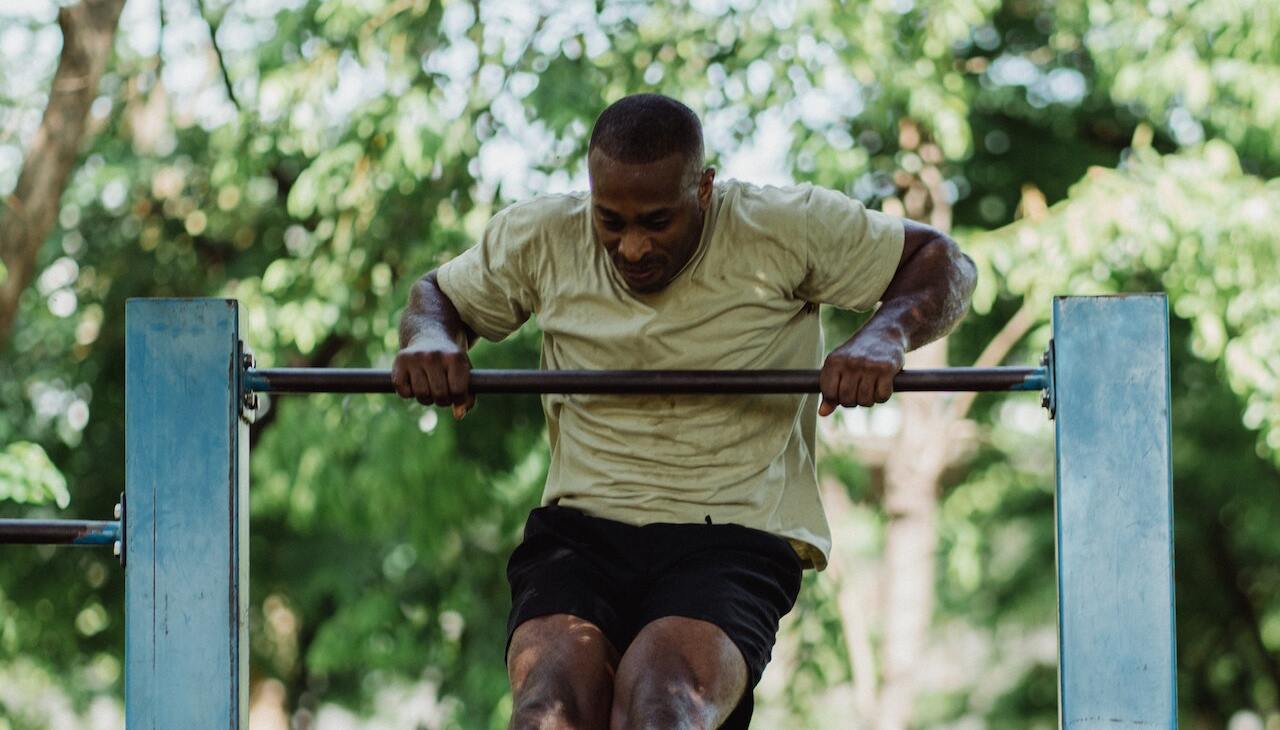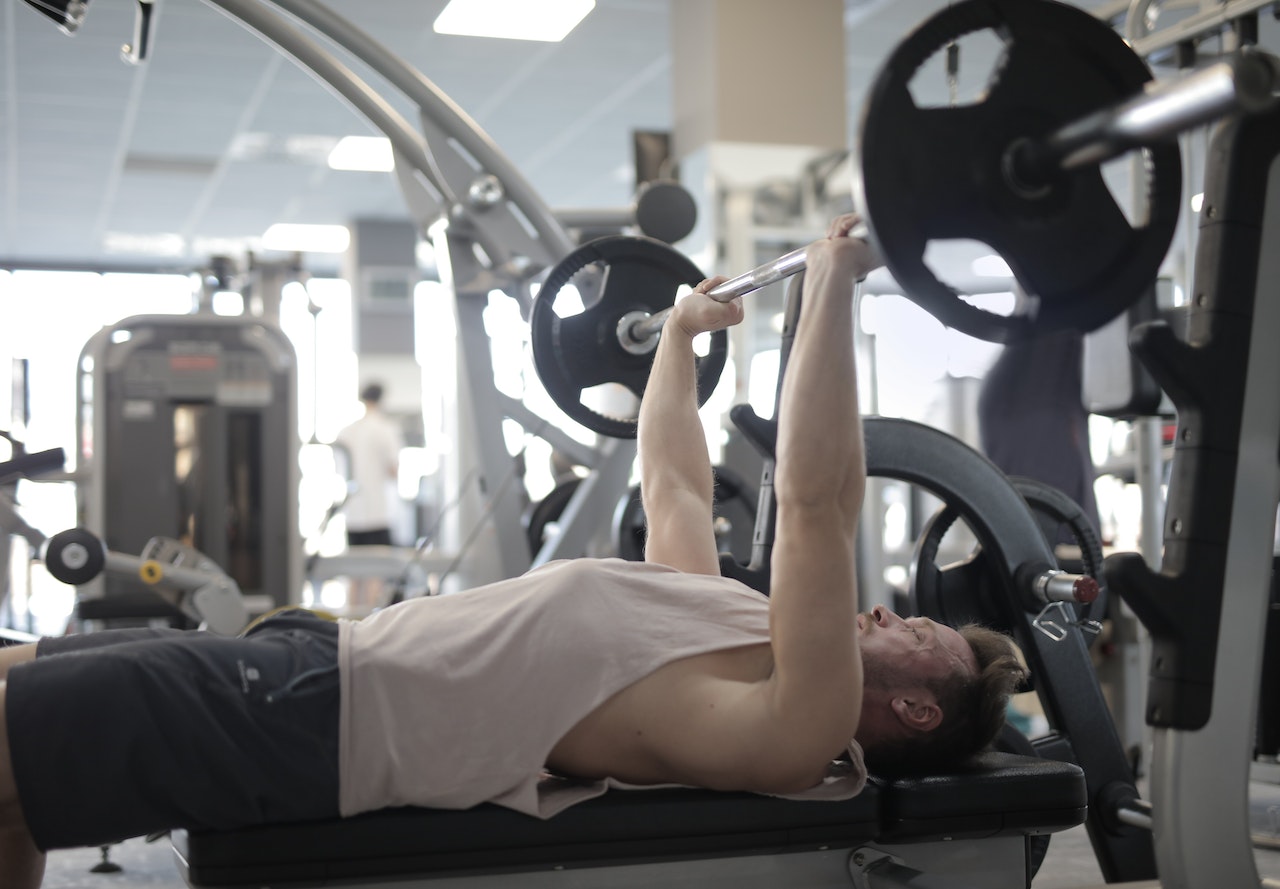×

Get Your Personal Workout Plan
in Less Than 1 Minute!
Ready to achieve your fitness goals? Take our quick quiz and get a workout plan tailored for you!
Get My Plan
The Science Behind Calisthenics: How It Builds Muscle and Burns Fat
Topic - Research
Published by ROVFIT | 05.18.2023
The information and products featured on this website are intended for educational and informational purposes only.
We are not responsible for any injuries, illnesses, or negative outcomes that may occur from using this information.

Calisthenics, a form of exercise that uses bodyweight movements, has gained significant popularity in recent years. Many fitness enthusiasts have embraced this versatile training method due to its effectiveness in building muscle and burning fat. In this blog post, we will explore the scientific principles behind calisthenics and delve into the mechanisms that contribute to its muscle-building and fat-burning benefits.
Building Muscle with Calisthenics:
Calisthenics, a form of exercise that uses bodyweight movements, has gained significant popularity in recent years. Many fitness enthusiasts have embraced this versatile training method due to its effectiveness in building muscle and burning fat. In this blog post, we will explore the scientific principles behind calisthenics and delve into the mechanisms that contribute to its muscle-building and fat-burning benefits.
Research conducted by Schoenfeld et al. (2017) examined the effects of bodyweight training on muscle growth. The study found that calisthenics exercises, such as push-ups, pull-ups, and squats, can elicit substantial increases in muscle size. The researchers observed that these movements engage multiple muscle groups simultaneously, resulting in a high level of muscle activation and recruitment. Additionally, calisthenics exercises require stabilization and coordination, further stimulating muscle fibers and promoting growth.
Another study by Gourgoulis et al. (2003) explored the muscle activation patterns during various calisthenics exercises. The research revealed that exercises such as push-ups activate the pectoralis major, deltoids, and triceps brachii muscles to a similar or greater extent than traditional weightlifting exercises like the bench press. These findings highlight the efficacy of calisthenics for muscle development.
Burning Fat with Calisthenics:
Calisthenics not only promotes muscle growth but also plays a significant role in burning fat. High-intensity calisthenics routines can increase the body's metabolic rate, leading to enhanced fat oxidation during and after exercise.
A study conducted by Kostek et al. (2015) investigated the metabolic response to high-intensity calisthenics. The researchers found that calisthenics workouts performed at high intensity can significantly elevate post-exercise oxygen consumption (EPOC), commonly referred to as the afterburn effect. EPOC represents the number of calories burned during the recovery period after exercise. The higher the EPOC, the more calories and fat are burned even when at rest.
Furthermore, calisthenics workouts often incorporate compound exercises that engage multiple muscle groups simultaneously. These compound movements, such as burpees, mountain climbers, and jumping squats, increase the overall energy expenditure during the workout. This heightened energy demand, combined with the afterburn effect, contributes to effective fat burning.
Calisthenics, with its emphasis on bodyweight movements and resistance, offers an effective means of building muscle and burning fat. Research supports the effectiveness of calisthenics for muscle hypertrophy and highlights its ability to engage multiple muscle groups simultaneously. Additionally, high-intensity calisthenics routines elevate metabolic rate and promote fat burning both during and after exercise. By incorporating calisthenics into your fitness regimen, you can enjoy the numerous benefits of this science-backed training method.
Research Sources:
- Schoenfeld, B. J., Grgic, J., Ogborn, D., & Krieger, J. W. (2017). Strength and hypertrophy adaptations between low- vs. high-load resistance training: a systematic review and meta-analysis. Journal of Strength and Conditioning Research, 31(12), 3508-3523.
- Gourgoulis, V., Aggeloussis, N., Kasimatis, P., Mavromatis, G., & Garas, A. (2003). Effect of a submaximal half-squats warm-up program on vertical jumping ability. Journal of Strength and Conditioning Research, 17(2), 342-344.
- Kostek, M. A., Pescatello, L. S., Seip, R. L., Angelopoulos, T. J., Clarkson, P. M., Gordon, P. M., Moyna, N. M., Visich, P. S., Zoeller, R. F., Thompson, P. D., & Hoffman, E. P. (2015). Subcutaneous fat alterations resulting from an upper-body resistance training program. Medicine and Science in Sports and Exercise, 47(2), 337-346.
Please note that while the above sources provide valuable insights into the science behind calisthenics, it's always recommended to consult with a fitness professional or a healthcare provider before starting any new exercise regimen.
More Articles

How to Bulk Properly this Winter with Bodyweight Workout AKA Calisthenics
Published by ROVFIT | 01.07.2024

Top 5 Calisthenics Challenges to Test Your Endurance and Strength
Published by ROVFIT | 08.21.2023

Push Up vs. Bench Press: An In-Depth Research-Based Comparison
Published by ROVFIT | 08.15.2023

Top 5 Bodyweight Exercises for Developing Explosive Power and Speed
Published by ROVFIT | 08.14.2023

Get Your Personal Workout Plan
in Less Than 1 Minute!
Ready to achieve your fitness goals? Take our quick quiz and get a workout plan tailored for you!
Get My Plan